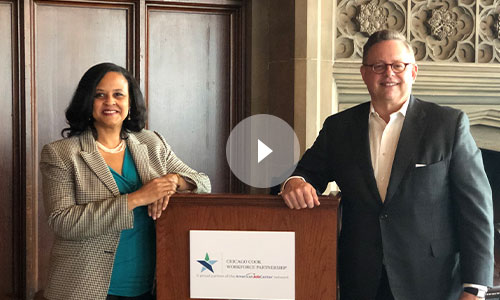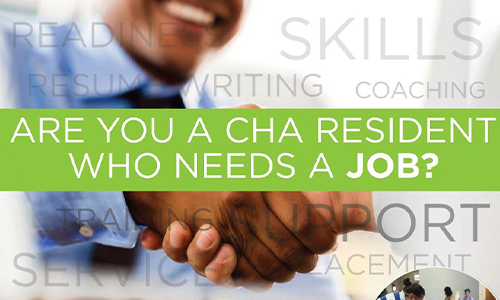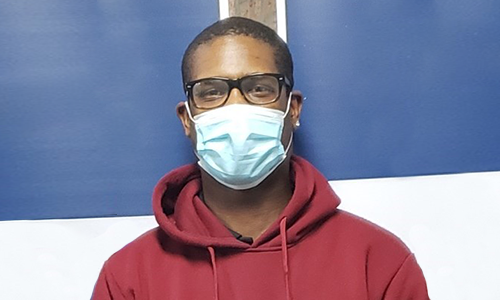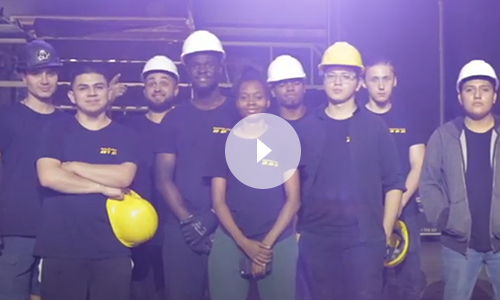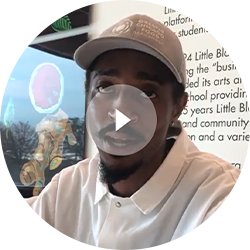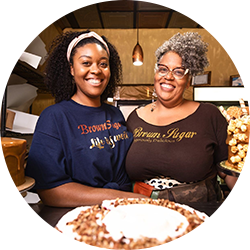
Annual Report 2021
The Partnership is the non-profit umbrella organization that operates the largest public workforce system in the country. As the designated administrator of federal workforce development funding for Chicago and Cook County, The Partnership oversees a network of more than 90 community-based organizations, American Job Centers, satellite sites, and sector-driven centers, serving more than 140,000 people annually.
The Partnership began in July 2012 with a $3 million cash advance on a $30 million budget. Since then, the non-profit has grown from an organization with a sole focus on federally funded workforce programs to one with a diverse portfolio of


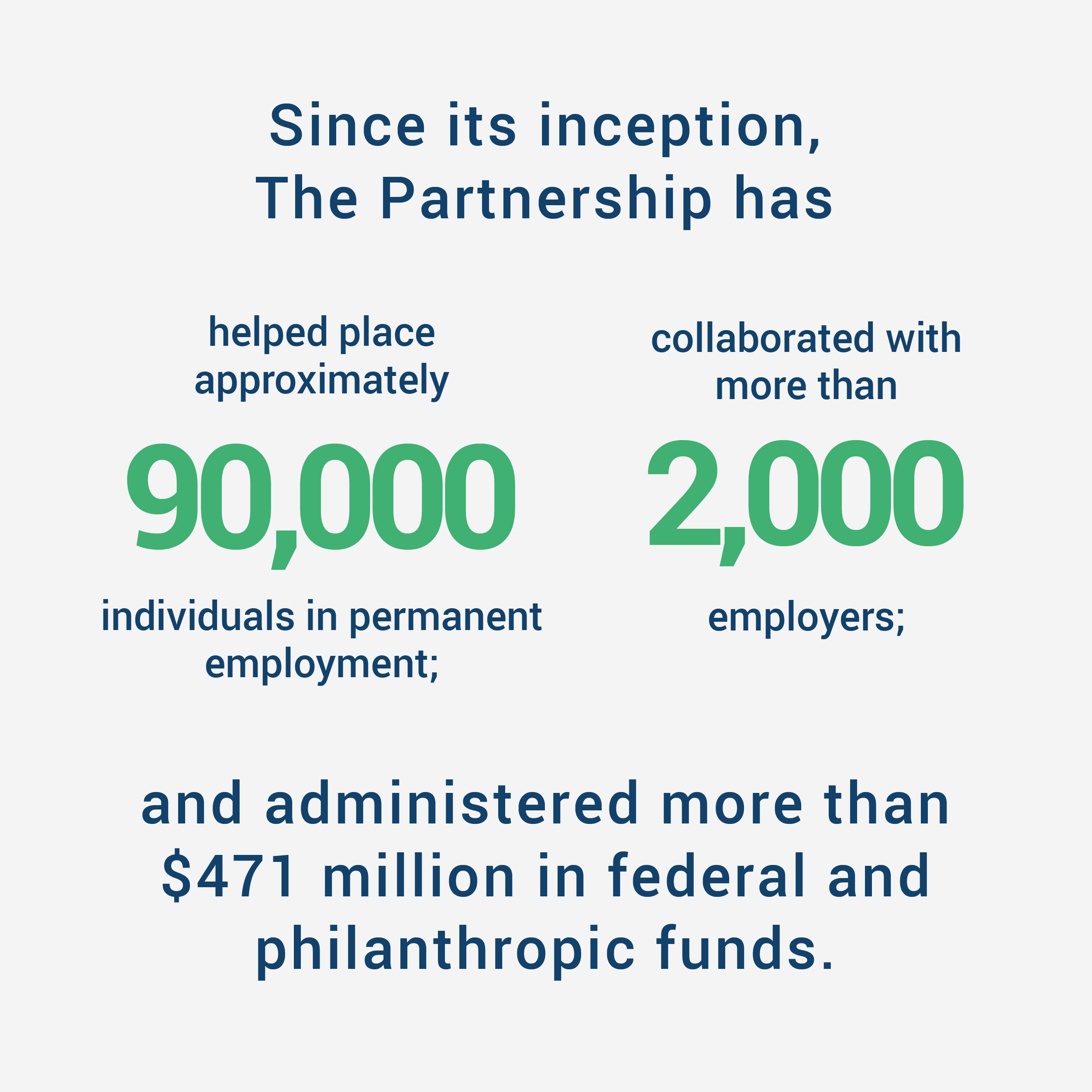
The Year of the Pivot
On March 20, 2020, Illinois Governor JB Pritzker imposed a stay-at-home order to prevent the further spread of COVID-19.
Cook County Board President Toni Preckwinkle and Chicago Mayor Lori Lightfoot issued orders supporting the statewide mandate. Directly after, The Partnership’s then-CEO Karin M. Norington-Reaves announced all of the organization’s employees would work remotely and that all Partnership services would also be performed virtually. As a result, we began the Great Pivot.
Pandemic Initiatives
June 2020
The Chicago Cook Workforce Partnership receives a $56 million grant from the City of Chicago and The Chicago Department of Public Health to create 600 contact tracing jobs.

July-August 2020
The Partnership releases two requests for proposals to identify Community Based Organizations (CBOs) to serve as local employers of contact tracers.

September 2020
The Partnership announces the 31 CBOs chosen to serve as local employers of contact tracers in the Chicago communities hit the hardest by the pandemic.
CBOs begin onboarding contact tracers who live and work in Chicago’s hardest-hit communities.
The Partnership receives $4.275 million from a National Disaster Recovery Grant and $3.875 million from a National Employment Recovery Grant, both of which are part of the National Dislocated Worker Program. The grants provide laid-off and displaced workers with subsidized employment and training in in demand industries while assisting with local disaster relief efforts connected to the public health crisis created by the pandemic. Through these grants, The Partnership makes it possible for approximately 12 non-profit organizations to meet a variety of community needs created by the pandemic.

October 2020
The Partnership joins Cook County Board President Toni Preckwinkle in announcing the County’s allocation of $4 million in Coronavirus Aid, Relief, and Economic Security (CARES) Act funding for job training and placement.
The Partnership participates in creating Cook County’s Early Warning Network. The Network reaches out to manufacturing companies that are in danger of layoffs or closure, offering business and financial services to help them avoid downsizing or going out of business.
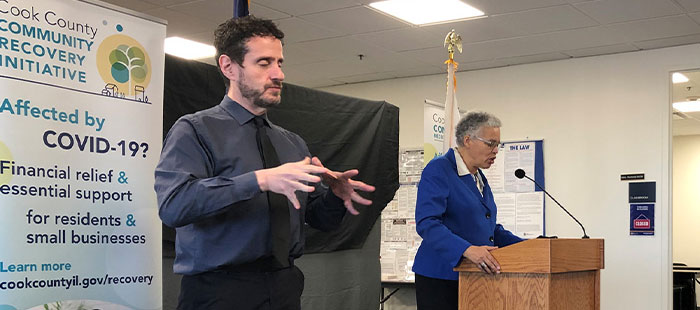
November 2020
The Partnership joins Mayor Lori E. Lightfoot as she announces an emergency COVID-19 relief package for the hospitality industry, including a $10 million grant program for Chicago’s restaurants and bars.
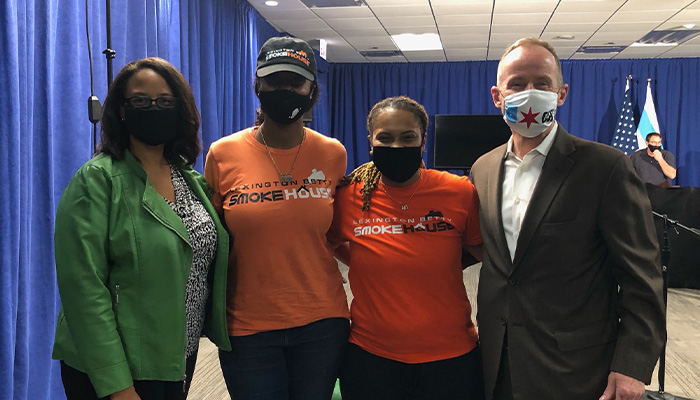
December 2020
Essential workers are eligible for COVID-19 vaccination. More than 160 contact tracers staff City-wide vaccination pods.
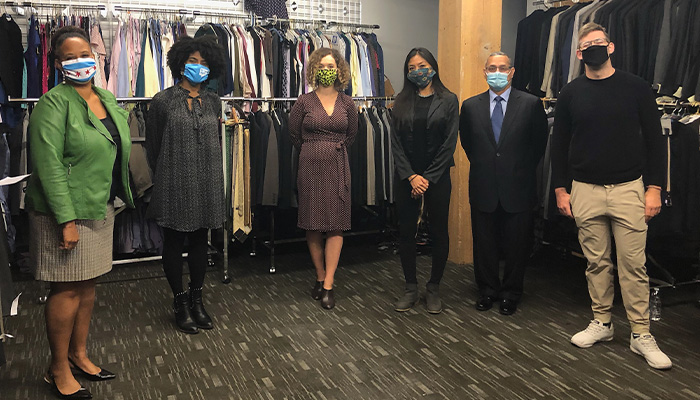
February 2021
More Americans are vaccinated than infected with COVID-19; the United States reaches a milestone as more Americans are reported to have received at least one dose of a vaccine against COVID-19 than having tested positive for the virus.
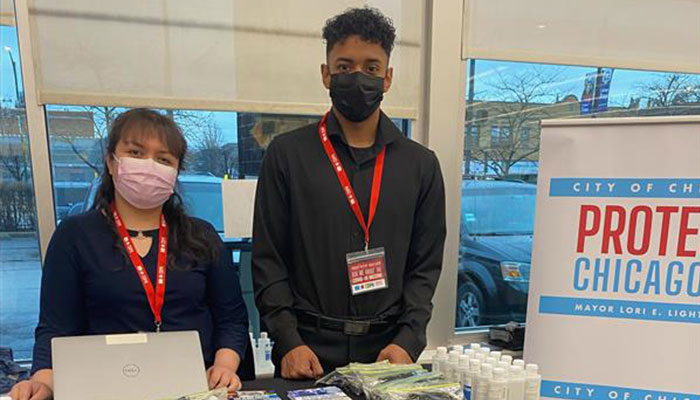
March 2021
Over a 72-hour period, The Partnership and CDPH created and trained Corps members to staff the COVID-19 Call Center serving the City’s United Center vaccination site.
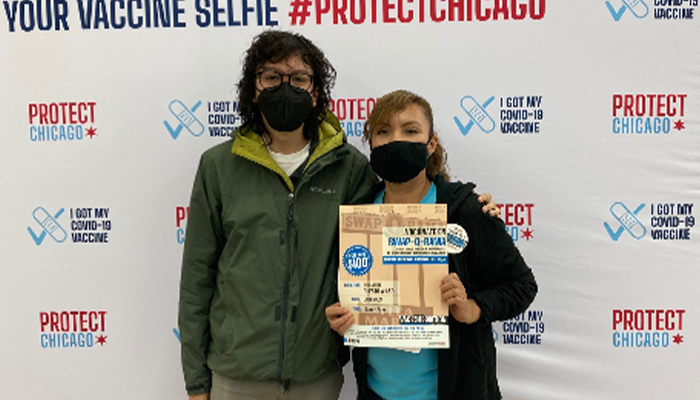
April 2021
The Promotores de Salud (also known as Community Health Workers or CHWs) are created to discuss COVID-19 and health-related issues in Spanish with the Hispanic community. As trusted members of the Hispanic and Black communities, Promotores provide services such as COVID-19 education and resources, patient advocacy, and translation through workshops, canvassing, and community outreach and events with the support of project partners.

June 2021
Corps members launch Community Canvassing Work, conducting door-to-door canvassing in 13 hard-hit Chicago communities with low vaccination rates.
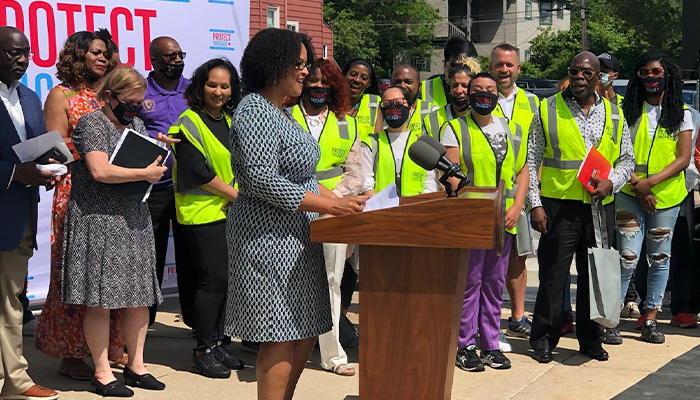
July/August 2021
Corps engages in community outreach, promoting and attending 519 city-wide events with vaccination sites. For example, the Corps supported a Swap-o-Rama event in Chicago where more than 2,000 residents were vaccinated.
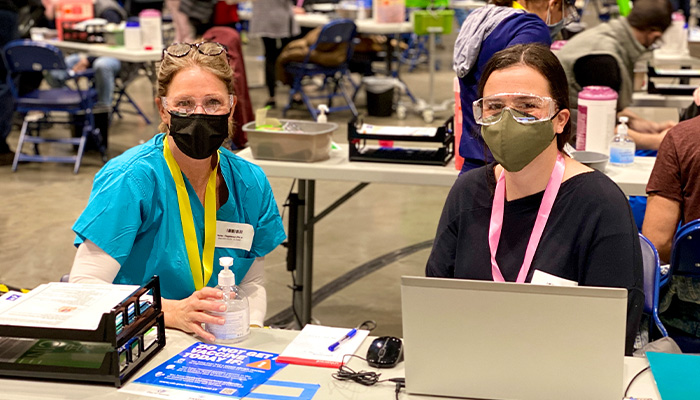
November 2021
Over eight months, The COVID-19 Call Center handled 303,256 inbound calls and made 79,564 outbound calls to specific populations.
The Corps supports and staff vaccination pods for children 5 to 11 years old.
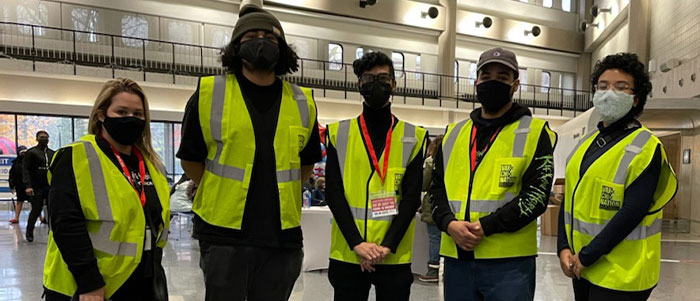
Workforce Innovation and Opportunity Act Investment
The Partnership is the designated administrator of federal Workforce Innovation and Opportunity Act (WIOA) funding for the City of Chicago and each of the 132 municipalities within Cook County.
WIOA provides a variety of resources to support employers and prospective employees alike. These tools promote professional development, job retention, and career advancement through a variety of occupational training models including:
- Employer-Driven Training On-the-Job Training (OJT) reimburses up to 50% of new employee training wages and costs for the first six months or 1,040 hours of employment.
- Customized Training typically involves longer-term training than OJT and often involves a third-party trainer identified by either the employer or a workforce development partner.
- Incumbent Worker Training (IWT) reimburses an employer for job-specific skills training provided to its existing employees.
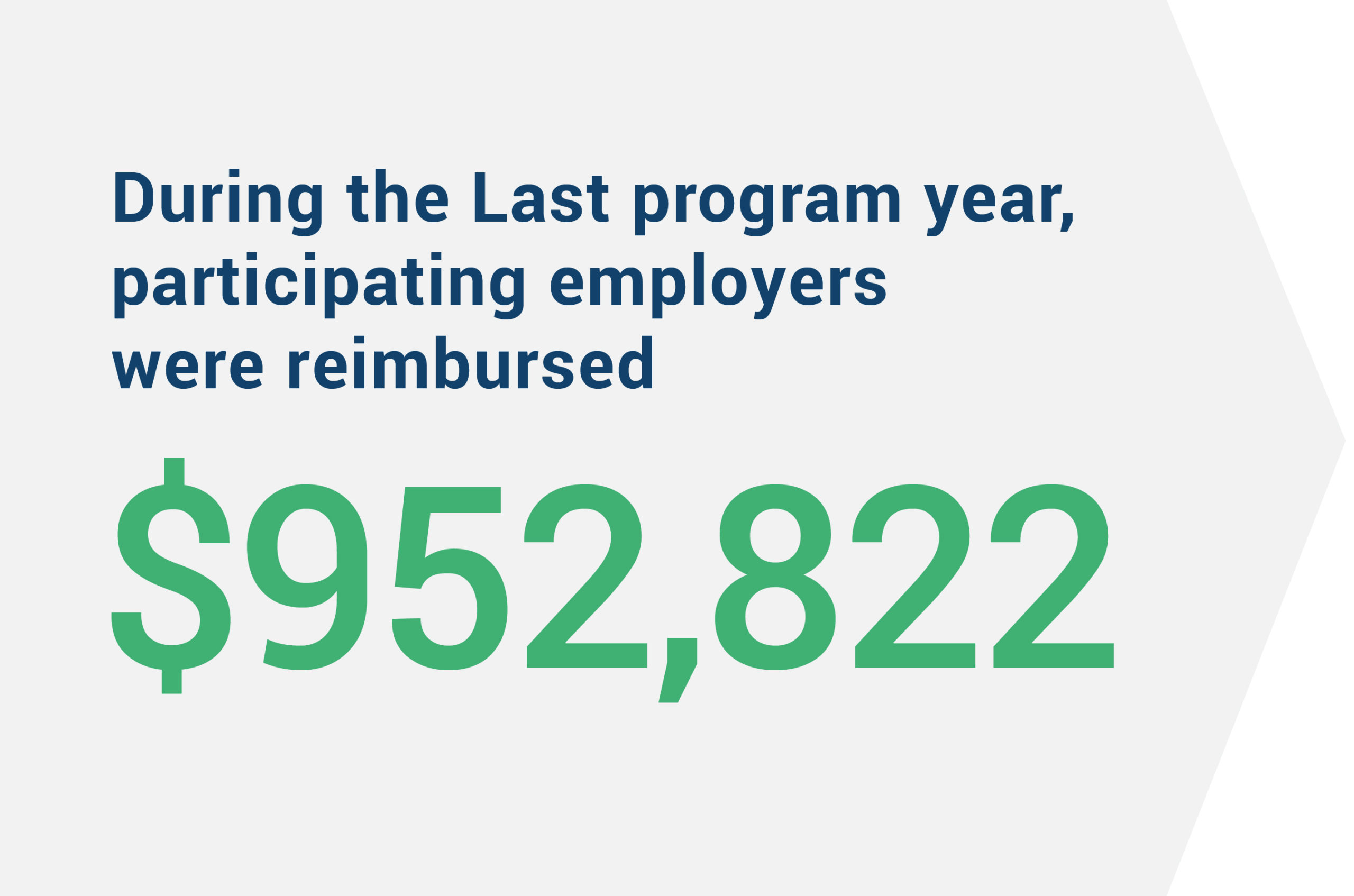

WIOA PY 2020 Adult Snapshot
July 2020 – July 2021
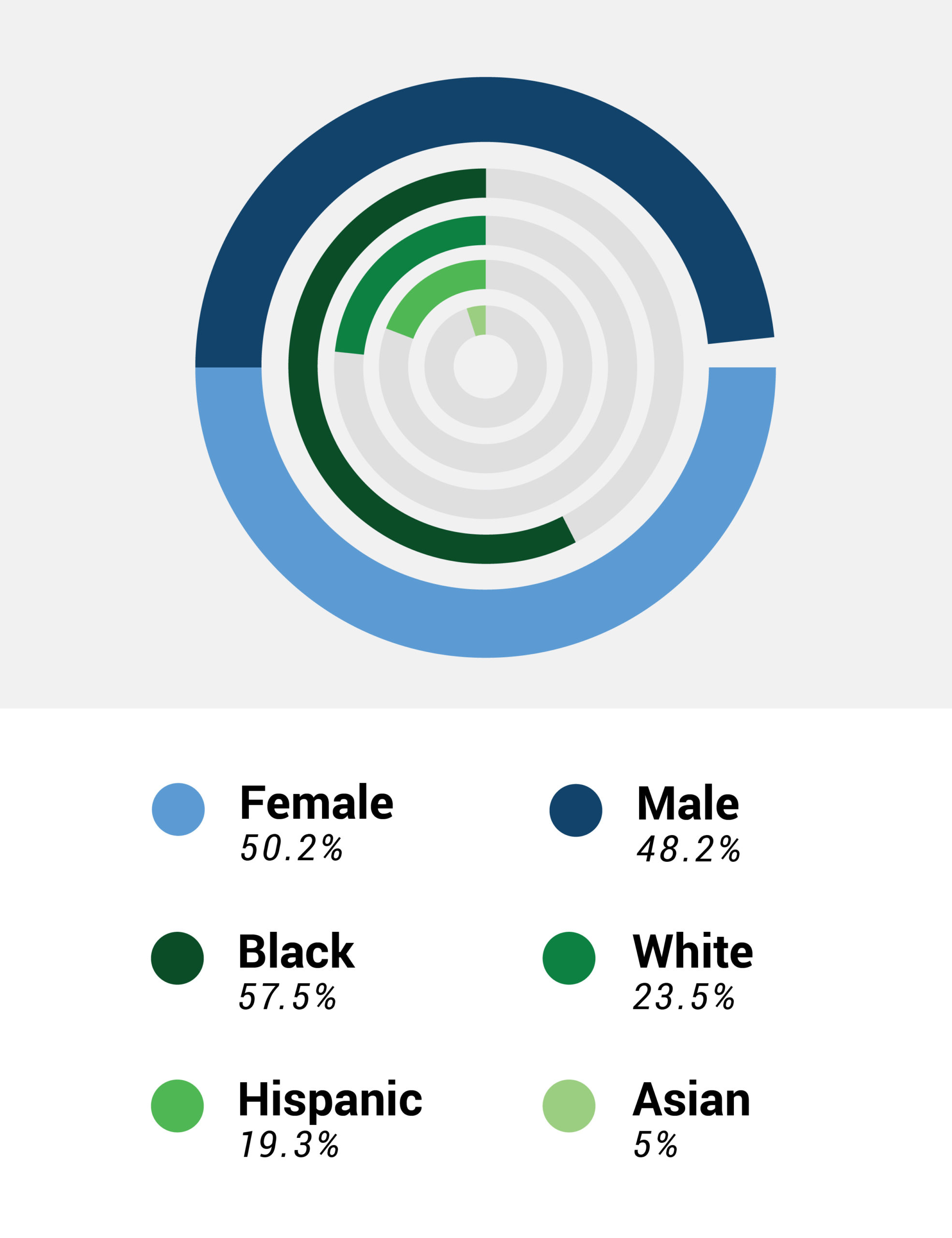
Demographics
Demographics
- 50.2% – Female
- 48.2% – Male
- 57.5% – Black
- 23.5% – White
- 19.3% – Hispanic
- 5% – Asian

Individuals Enrolled
Individuals Enrolled
- 3,390 – Served
- 1,577 – New Enrollments
- 1,500 – Exited*
- 2,682 – Received Training
- * (including 889 with a job)

Education
Education
- 23.4% – College Graduates
- 9.7% – Some College
- 46.6% – High School Diploma
- 4% – High School Dropout
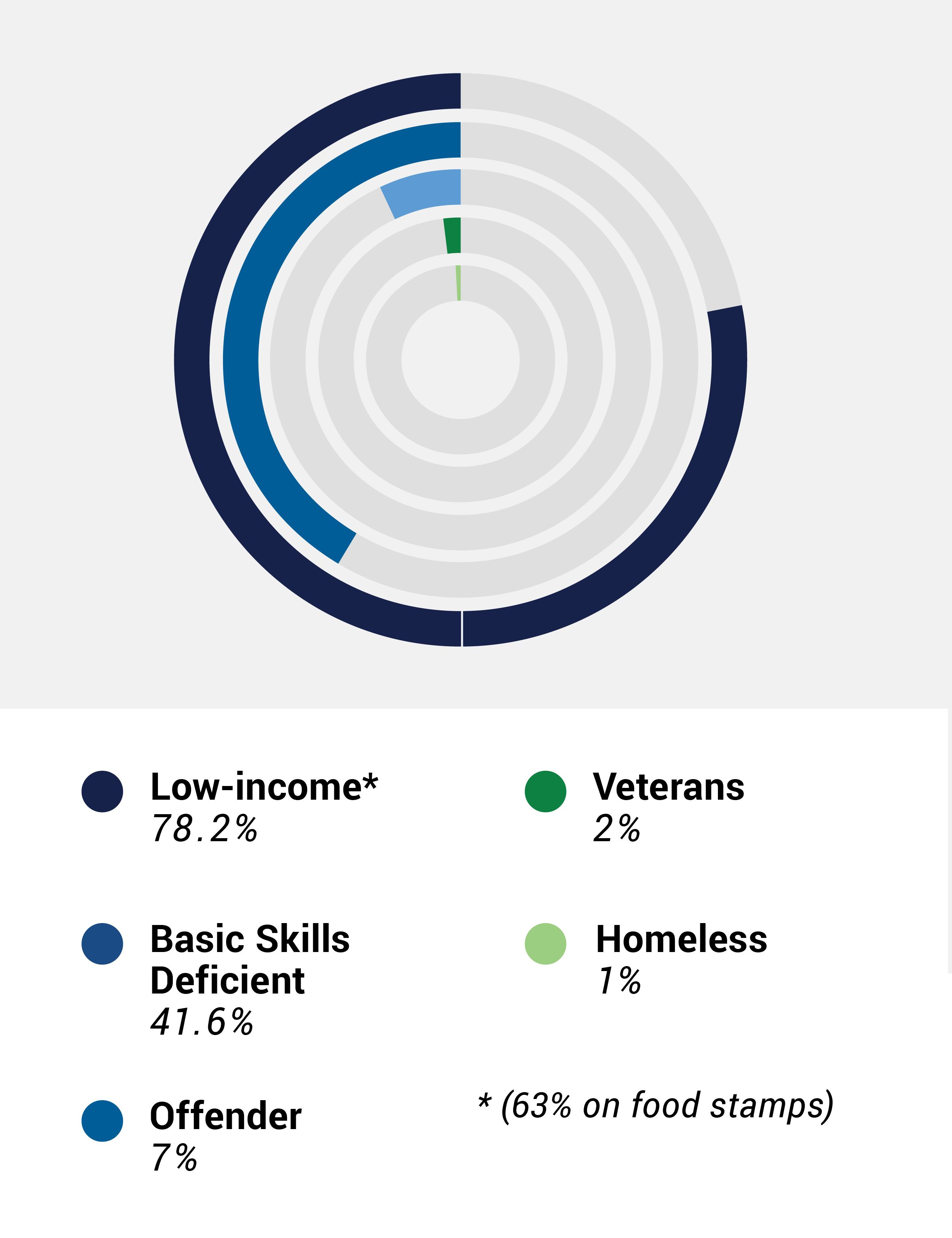
Economic Barriers
Economic Barriers
- 78.2% – Low-Income *
- 41.6% – Basic Skill Deficient
- 7% – Offender
- 2% – Veterans
- 1% – Homeless
- * (63% on food stamps)
WIOA PY 2020 Dislocated Workers Snapshot
July 2020 – July 2021

Demographics
Demographics
- 40.2% – Female
- 57.3% – Male
- 36.9% – Black
- 40.9% – White
- 25.4% – Hispanic
- 5.5% – Asian
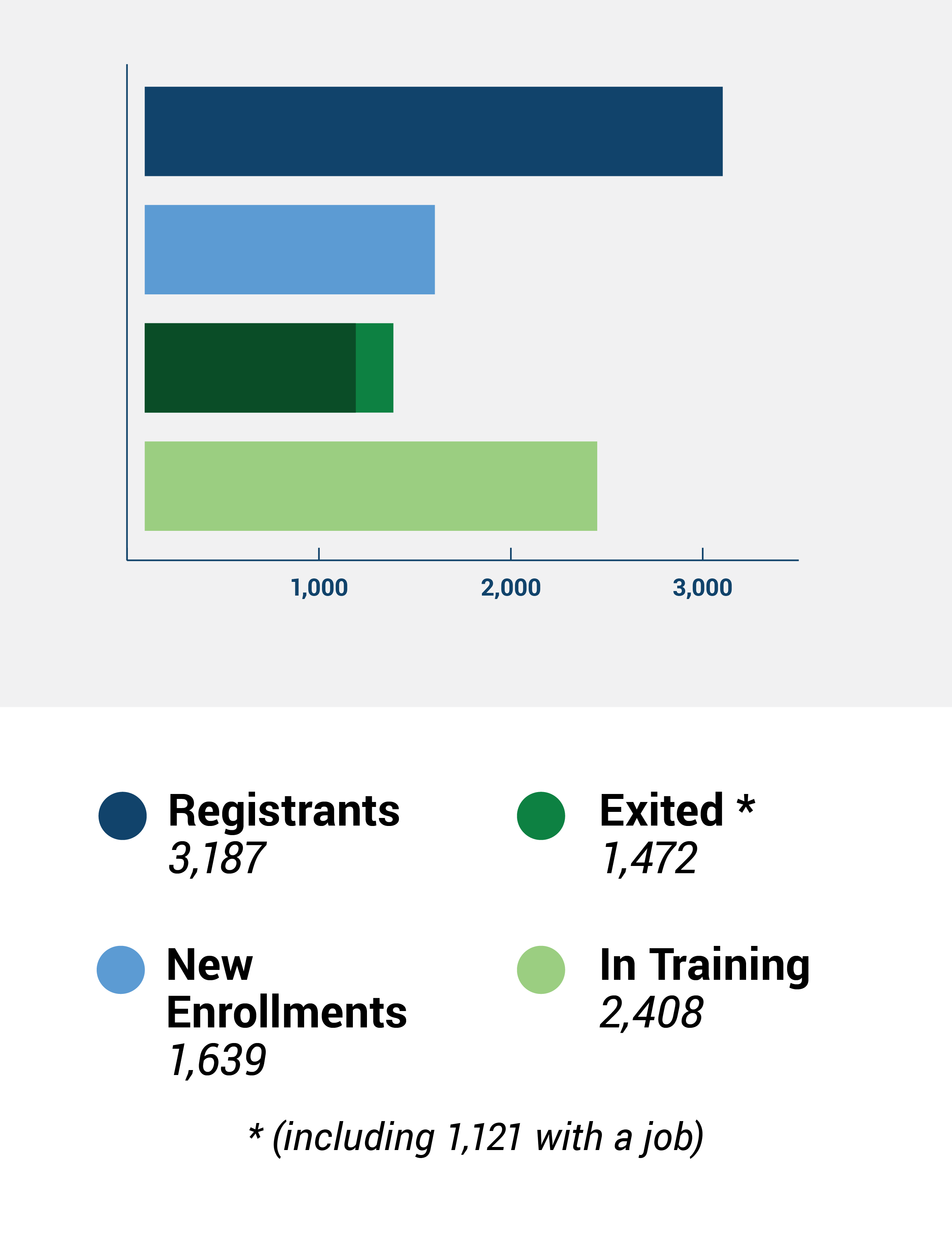
Registrants Served
Registrants Served
- 3,187 – Registrants
- 1,639 – News Enrollments
- 1,472 – Exited *
- 2,408 – In Training
- * (including 1,121 with a job)
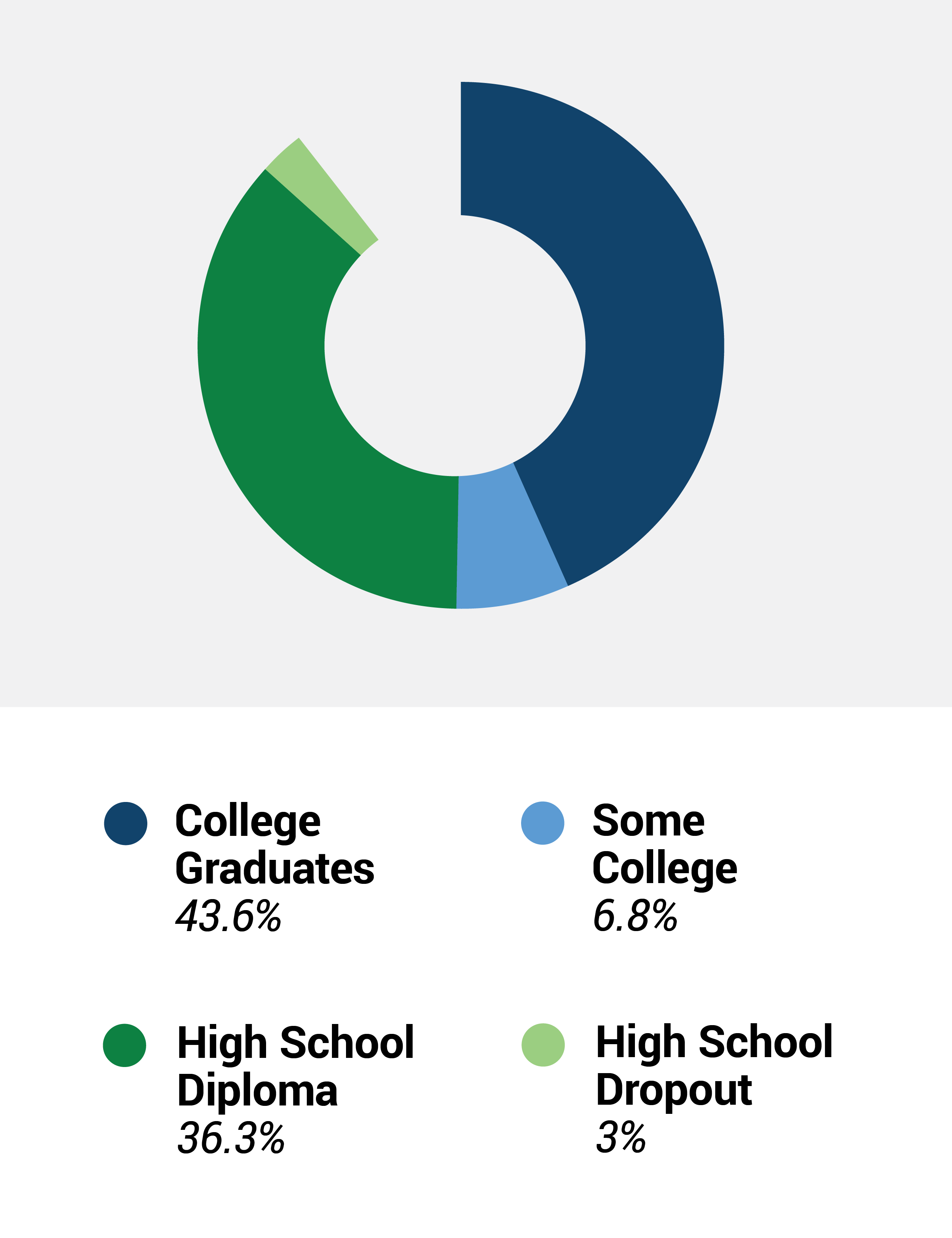
Education
Education
- 43.6% – College Graduates
- 6.8% – Some College
- 36.3% – High School Diploma
- 3% – High School Dropout

Economic Barriers
Economic Barriers
- 52% – Low Income
- 87.5% – Receiving Benefits
- 10.9% – Exhausted Unemployment
- 9.7% – Long-term Unemployment
- 29.4% – Basic Skills Deficient
- 5.3% – Veterans
- 2.9% – Offenders
WIOA PY 2020 Youth Snapshot
July 2020 – July 2021

Demographics
Demographics
- 57.6% – Female
- 41.4% – Male
- 60.7% – Black
- 29.7% – Hispanic
- 16.7% – White
- 1.3% – Asian

Registrants Served
Registrants Served
- 57.6% – Registrants
- 41.4% – New Enrollments
- 60.7% – Exited *
- 29.7% – In Training
- * (including 597 exit with employment)

Education
Education
- 13.8% – In-School Youth
- 86.1% – Out-of-School Youth
- 61.7% – High School Diploma
- 16.3% – High School Dropout

Economic Barriers
Economic Barriers
- 43.9% – Low-Income*
- 47.1% – Living in Low Poverty Area
- 16.8% – Disabling Condition
- 10% – Homeless
- 17.3% – Pregnant/Parenting
- 50.5% – Basic Skills Deficient
- 3.2% – Offender
- * (27% on food stamps)
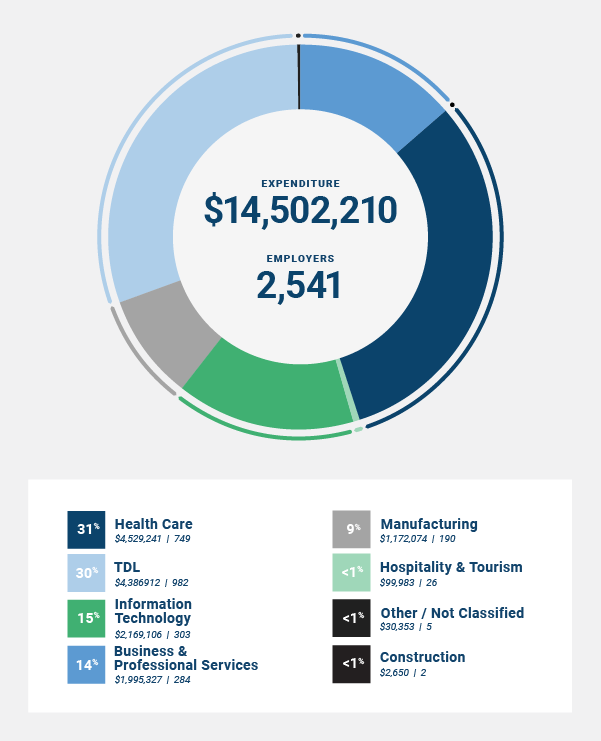
Individual Training Accounts
Individual Training Accounts
- $4,529,241 / 749 – Health Care
- $4,386,912 / 982 – TDL
- $2,169,106 / 303 – Information Technology
- $1,995,327 / 284 – Business & Professional Services
- $1,172,074 / 190 – Manufacturing
- $99,983 / 190 – Hospitality & Tourism
- $30,353 / 5 – Other/Not Classified
- $2,650 / 2 – Construction
Expenditure – $14,502,210
Employers – 2,541
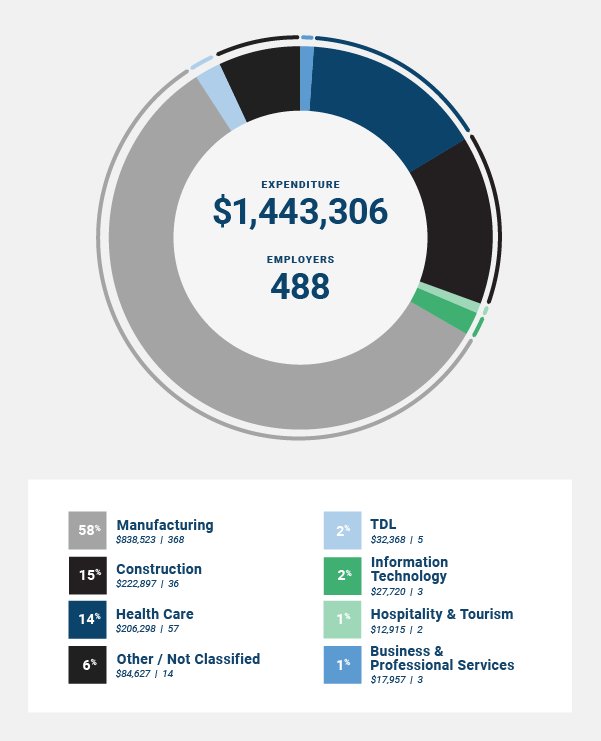
Employer Facing Training Funding
Employer Facing Training Funding
- $838,523 / 368 – Manufacturing
- $222,897 / 36 – Construction
- $206,298 / 57 – Health Care
- $84,627 / 14 – Other/Not Classified
- $32,368 / 5 – TDL
- $27,720 / 3 – Information Technology
- $12,915 / 2 – Hospitality & Tourism
- $17,957 / 3 – Business & Professional Services
Expenditure – $1,443,306
Employers – 488
Delivering Results in High-Demand Sectors
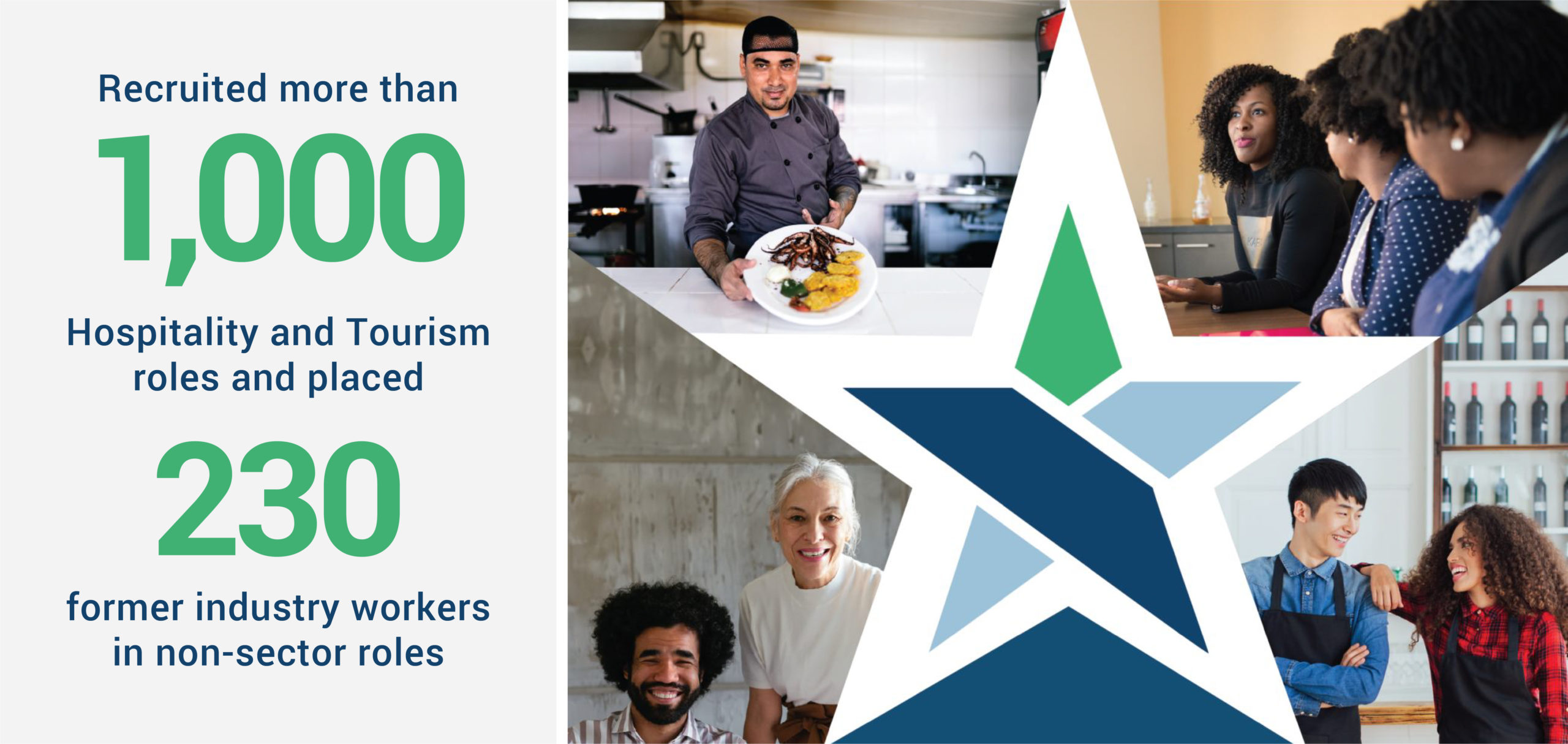


2021 Financials

Revenue
Revenue
- 97.3% – Government Grants and Contracts
- 2.6% – Corporate and Foundation Grants
- <1% – Other
Total $83,286,998

Expenses
Financials Expenses
- 99% – Program Services
- <1% – Management and General
- <1% – Fundraising
Total $83,470,072
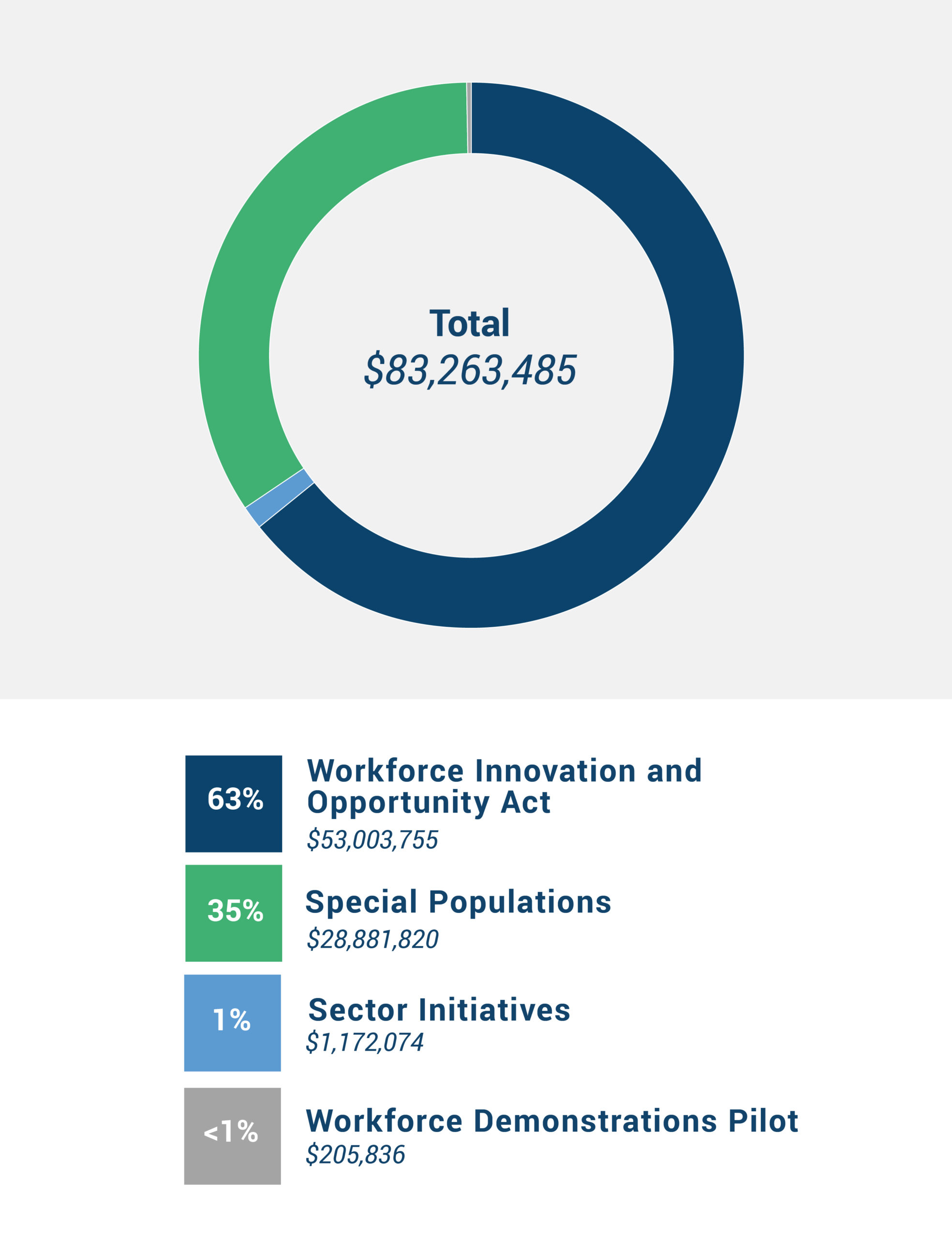
Program Expenses by Area
Program Expenses by Area
- 99% – Workforce Innovation and Opportunity Act
- 35% – Special Populations
- 1% – Sector Initiatives
- <1% – Workforce Demonstrations Pilot
Total $83,263,485









